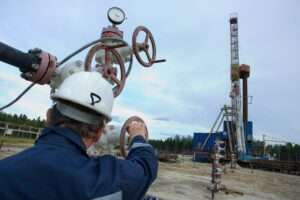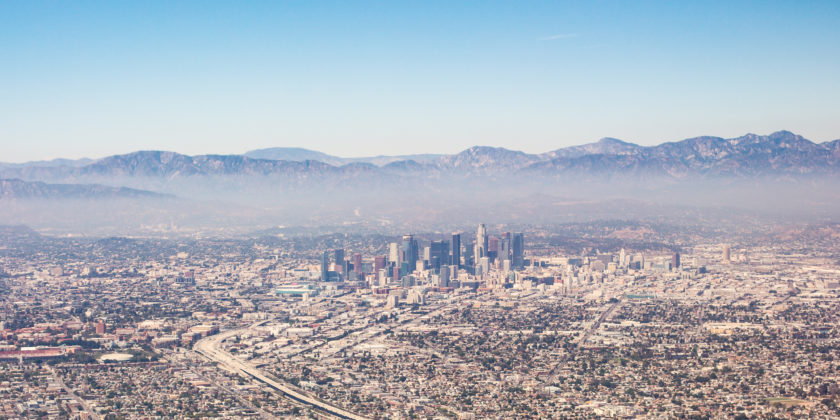Clean air and water are essential to the health of all Americans. Born in the wake of elevated concern about environmental pollution, the Environmental Protection Agency (EPA) was established on December 2, 19701, to consolidate in one agency a variety of federal research, monitoring, standard-setting and enforcement activities to ensure environmental protection. Jay Harold’s Post,”30 Urban Air Toxic Pollutants & 68 Area Sources From the EPA,” talks about proposed changes to the EPA. The post will also discuss air pollution and its effects on Americans.
EPA Administrator Scott Pruitt2 on April 2, 2018, announced that aggressive light-vehicle fuel efficiency and emissions limits set under the Obama administration for model years 2022-25 are “not appropriate,” triggering a controversial new rulemaking process to adjust the standards and a possible showdown with California.
NHTSA’s Corporate Average Fuel Economy3 (CAFE) standards regulate how far our vehicles must travel on a gallon of fuel. NHTSA sets CAFE standards for passenger cars and light trucks (collectively, light-duty vehicles), and separately sets fuel consumption standards for medium- and heavy-duty trucks and engines. NHTSA also regulates the fuel-economy window stickers on new vehicles.
Air Pollution in the United States4
Air pollution emitted from transportation contributes to smog, and to poor air quality, which has negative impacts on the health and welfare of U.S. citizens. Pollutants that contribute to poor air quality include particulate matter (PM), nitrogen oxides (NOx), and volatile organic compounds (VOCs).
- Over 55% of NOx total emissions inventory in the U.S.
- Less than 10% of VOCs emissions in the U.S.
- Less than 10% of PM2.5 and PM10 emissions in the U.S.
EPA implements national programs and standards for fuels and vehicles that reduce air pollution including smog, soot, and toxic pollutants, and spur investments in clean vehicle and engine technology. EPA programs to reduce emissions from transportation sources have resulted in less smog and soot, significantly better air quality and better health for Americans. By 2030, EPA air quality emissions standards for vehicles are projected to prevent annually:
- 40,000 premature deaths
- 34,000 avoided hospitalizations

- 4.8 million work days lost
What are Urban Air Toxics?
Air toxics, also known as toxic air pollutants or hazardous air pollutants, are those pollutants that cause or may cause cancer or other serious health effects, such as reproductive effects or birth defects, or adverse environmental and ecological effects.
30 Urban Air Toxic Pollutants5
There are 187 hazardous air pollutants6 (HAPs) that EPA is required to control. From these HAPs, EPA identified 30 that pose the greatest potential health threat in urban areas. These HAPs are referred to as the 30 urban air toxics. EPA also identified an additional three HAPs, but these HAPs are not generally emitted by area sources and, as such, were not included as part of the 30 urban air toxics. The three additional HAPs are coke oven emissions, 1,2-dibromoethane, and carbon tetrachloride.
| List of 30 Urban Air Toxics | ||
|---|---|---|
| Acetaldehyde | Dioxin | Mercury compounds |
| Acrolein | Propylene dichloride | Methylene chloride (dichloromethane) |
| Acrylonitrile | 1,3-dichloropropene | Nickel compounds |
| Arsenic compounds | Ethylene dichloride (1,2-dichloroethane) | Polychlorinated biphenyls (PCBs) |
| Benzene | Ethylene oxide | Polycyclic organic matter (POM) |
| Beryllium compounds | Formaldehyde | Quinoline |
| 1,3-butadiene | Hexachlorobenzene | 1,1,2,2-tetrachloroethane |
| Cadmium compounds | Hydrazine | Tetrachloroethylene (perchloroethylene) |
| Chloroform | Lead compounds | Trichloroethylene |
| Chromium compounds | Manganese compounds | Vinyl chloride |
The Clean Air Act identifies 187 hazardous air pollutants (HAPs) that EPA is required to control to protect public health. More specifically, to address HAPs in urban areas, section 112(k) of the Clean Air Act directs EPA to:
- Identify a subset of 30 HAPs that present the greatest threat to public health in the largest number of urban areas. These 30 HAPs are known as the 30 urban air toxics.
- Identify area sources that represent 90 percent of the combined emissions of the 30 urban air toxics, and subject these sources to regulation. The EPA identified 68 area source categories of urban air toxics.

68 Area Sources of Urban Air Toxics7
Area sources are smaller stationary sources of air pollution that emit less than 10 tons per year of a single air toxic, or less than 25 tons per year of a combination of air toxics. Through the Integrated Urban Air Toxics Strategy and multiple separate listings, the EPA identified 68 area source categories that represent 90 percent of the combined emissions of the 30 urban air toxics.
| List of 68 Area Sources of Urban Air Toxics | |
|---|---|
| Acrylic Fibers/Modacrylic Fibers Production | Iron and Steel Forging |
| Agricultural Chemicals and Pesticides Manufacturing | Iron Foundries |
| Aluminum Foundries | Lead Acid Battery Manufacturing |
| Asphalt Processing and Asphalt Roofing Manufacturing | Medical Waste Incinerators |
| Autobody Refinishing Paint Shops | Mercury Cell Chlor-Alkali Plants |
| Carbon Black Production | Miscellaneous Organic NESHAP |
| Chemical Manufacturing: Chromium Compounds | Municipal Landfills |
| Chemical Preparations | Municipal Waste Combustors (MWC) |
| Chromic Acid Anodizing | Nonferrous Foundries |
| Clay Products Manufacturing (Clay Ceramics Manufacturing) | Oil and Natural Gas Production |
| Commercial Sterilization Facilities | Paint Strippers |
| Copper Foundries | Paints and Allied Products Manufacturing |
| Cyclic Crude and Intermediate Production | Pharmaceutical Production |
| Decorative Chromium Electroplating | Plastic Materials and Resins Manufacturing |
| Dry Cleaning Facilities | Plastic Parts and Products (Surface Coating) |
| Electrical and Electronic Equipment – Finish Operations | Plating and Polishing |
| Fabricated Metal Products | Polyvinyl Chloride and Copolymers Production |
| Fabricated Plate Work | Portland Cement |
| Fabricated Structural Metal Manufacturing | Prepared Feeds Materials |
| Ferroalloys Production: Ferromanganese & Silicomanganese | Pressed and Blown Glass and Glassware Manufacturing |
| Flexible Polyurethane Foam Fabrication Operations | Primary Copper (not subject to MACT) |
| Flexible Polyurethane Foam Production | Primary Metal Products Manufacturing |
| Gas Distribution Stage 1 | Primary Nonferrous Metals (Zn, Cd, and Be) |
| Halogenated Solvent Cleaners | Public Owned Treatment Works |
| Hard Chromium Electroplating | Secondary Copper Smelting |
| Hazardous Waste Incineration | Secondary Lead Smelting |
| Heating Equipment, Except Electric | Secondary Nonferrous Metals |
| Hospital Sterilizers | Sewage Sludge Incineration |
| Industrial Boilers Fired by Coal, Wood and Oil | Stainless and Nonstainless Steel Manufacturing Electric Arc Furnace |
| Industrial Inorganic Chemical Manufacturing | Stationary Internal Combustion Engines |
| Industrial Machinery and Equipment – Finish Operations | Steel Foundries |
| Industrial Organic Chemical Manufacturing | Synthetic Rubber Manufacturing |
| Inorganic Pigments Manufacturing | Valves and Pipe Fittings |
| Institutional/Commercial Boilers Fired by Coal, Wood, and Oil | Wood Preserving |
Health effects of Urban Air Toxics
Air toxics tend to pose greater risks in urban areas because these areas have large populations and a higher concentration of emission sources. Combined exposures from all sources of air pollution, including major stationary sources, smaller area sources, indoor sources and mobile sources can increase public health risks from air toxics. Low-income neighborhoods, tribal populations and communities of color that live in urban areas may be disproportionately exposed to air pollution, which is a barrier to economic opportunity and security.
Jay Harold hopes you enjoyed this post, “30 Urban Air Toxic Pollutants & 68 Area Sources From the EPA.” Please Share it and read more about Jay Harold here. Please take this advice from Muhammad Ali and give back to others. “Service to others is the rent you pay for your room here on earth.”
Bibliography
- https://www.epa.gov/history
- http://www.autonews.com/article/20180402/OEM11/180409926/trump-epa-cafe-standards
- https://www.nhtsa.gov/laws-regulations/corporate-average-fuel-economy
- https://www.epa.gov/transportation-air-pollution-and-climate-change/smog-soot-and-local-air-pollution
- https://www.epa.gov/urban-air-toxics/urban-air-toxic-pollutants
- https://19january2017snapshot.epa.gov/haps/initial-list-hazardous-air-pollutants-modifications_.html
- https://19january2017snapshot.epa.gov/urban-air-toxics/area-sources-urban-air-toxics_.html




